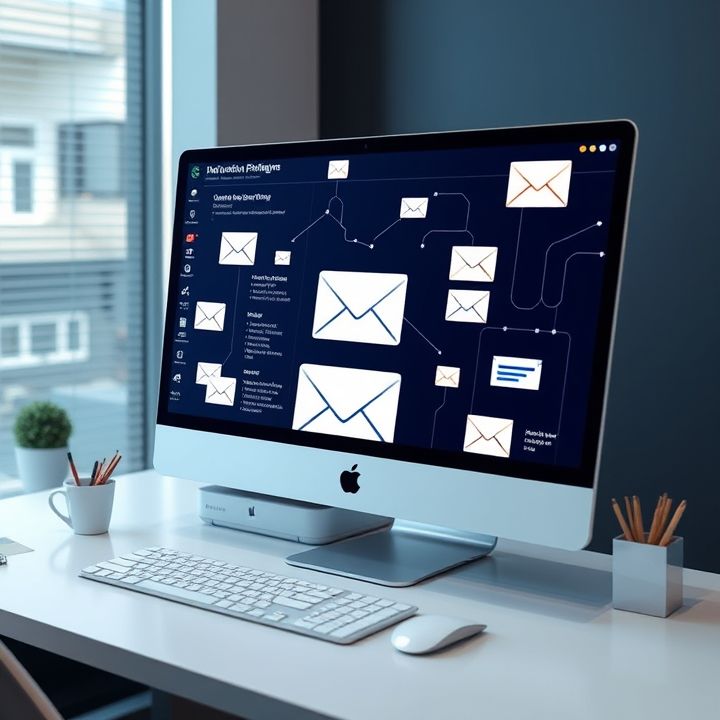Table of Contents
- Introduction
- Understanding Urgency and Scarcity: Key Concepts and Differences
- Crafting Urgent and Scarce Subject Lines that Capture Attention
- Using Time-Limited Offers to Create a Sense of Urgency
- Incorporating Scarcity in Product Availability to Drive Demand
- Examples of Urgency and Scarcity in Action: Case Studies
- Conclusion
- Frequently Asked Questions
Introduction
Are you tired of sending out emails to your audience only to be met with the deafening silence of unopened messages and disregarded calls to action? It’s time to transform your email strategy from overlooked to unstoppable. In “Unlock the Secret Email Tactics That Skyrocket Action Rates Overnight!”, we’ll delve into the hidden techniques used by top marketers to drastically increase email engagement.
Imagine waking up each morning to find your email open rates sky-high and your click-through rates soaring! Here’s a sneak peek of what you can expect:
| Tactic | Benefit |
|---|---|
| Personalization | Connect with your audience on a deeper level |
| A/B Testing | Optimize for maximum impact |
| Automation | Save time while boosting efficiency |
Whether you’re looking to increase sales, enhance customer relationships, or simply bring your newsletter back to life, these inventive yet practical strategies will provide the results you’ve been longing for. Get ready to discover the potential of your email campaigns like never before. And to visualize the journey, here’s a hint of excitement:
Stay tuned as we unravel these secrets and much more!
Understanding Urgency and Scarcity: Key Concepts and Differences
Understanding urgency and scarcity is crucial for marketers aiming to drive immediate action in emails. Although they are often used together, they entail different concepts. Urgency refers to the time-sensitive nature of an offer or message, emphasizing the need for quick action. Phrases like ‘limited time offer’ or ‘only 24 hours left’ convey urgency by creating a mental countdown for the recipient. The aim is to instill a sense of immediacy, prompting individuals to act promptly before they miss out.
On the other hand, scarcity denotes the limited availability of a product, service, or opportunity. It implies that items are rare or in short supply, encouraging potential customers to act swiftly to secure their desired outcome. Terms such as ‘only a few left in stock’ or ‘exclusive offer for the first 50 customers’ leverage this concept effectively.
While both urgency and scarcity tap into a customer’s fear of missing out, urgency focuses on time constraints, and scarcity emphasizes limited availability. When used wisely in email marketing, these techniques can significantly enhance engagement rates, compelling recipients to take immediate action and increase the likelihood of closing a sale or meeting a campaign goal.
Crafting Urgent and Scarce Subject Lines that Capture Attention
The subject line of an email is the first impression you give to your reader and is crucial in leveraging urgency and scarcity to drive action. Crafting a compelling subject line can significantly increase your email open rates. Incorporating elements of urgency, such as time-sensitive offers or deadlines, creates a subtle pressure on the recipient to engage with your message promptly. For instance, phrases like “Last Chance” or “Ends Tonight” effectively convey that action is needed immediately. Additionally, invoking scarcity by emphasizing limited stock or exclusive offers can trigger fear of missing out (FOMO) and compel the reader to act swiftly. Terms like “Only a Few Left” or “Exclusive Offer for You” suggest that the opportunity is not only valuable but also fleeting. These psychological triggers tap into a consumer’s innate desire for limited-edition products or deals that others might miss. However, it’s essential to ensure that the sense of urgency and scarcity portrayed in the subject line aligns with the actual content and offer in the email. Consistency between the subject line and email content fosters trust and encourages readers to take the desired action, whether it’s making a purchase or signing up for an event.
Using Time-Limited Offers to Create a Sense of Urgency
One effective strategy to drive immediate action through email marketing is by using time-limited offers. These offers create a sense of urgency by putting a deadline on the availability of a product or service, prompting recipients to act quickly to take advantage of the deal. For instance, including phrases such as “Ends Tonight” or “24-Hour Sale” in the subject line or email body prompts the reader to prioritize your email over others. This urgency compels them to react before the opportunity slips away. Additionally, including countdown timers within the email can visually emphasize the limited time frame, further motivating recipients. It’s crucial to ensure that the offers are genuine to maintain trust with your audience. Overusing time-limited offers can lead to skepticism, so it’s important to balance these campaigns with regular content. By strategically leveraging time-limited offers, you can boost engagement and conversions by compelling your audience to make quick decisions based on a fear of missing out on valuable deals.
Incorporating Scarcity in Product Availability to Drive Demand
Incorporating scarcity in product availability is a powerful technique to drive demand by creating a sense of urgency among consumers. When products are perceived as limited in stock, customers are more likely to prioritize the purchase to avoid missing out. Communicating scarcity can be especially effective through email marketing by highlighting limited-time offers or exclusive deals.
A popular approach is to include specific phrasing such as “Only a few items left” or “Limited stock available,” which alerts potential buyers to the immediacy of the opportunity. This psychological trigger compels recipients to complete their purchase sooner rather than later. Further amplifying this effect, showcasing the actual number of remaining items can provide tangible quantification of scarcity.
Another method is setting a countdown timer within the email, visually representing the limited time consumers have to act. This visual cue serves as a constant reminder of the ticking clock, further propelling the urgency to make quick purchase decisions.
However, it is vital to employ these techniques authentically and ethically to maintain trust with your audience. Artificial scarcity may lead to customer dissatisfaction if they sense deception, ultimately harming the brand’s reputation. By leveraging genuine scarcity in product availability, brands can effectively boost demand while fostering trust and credibility.
Examples of Urgency and Scarcity in Action: Case Studies
Urgency and scarcity are effective techniques used in marketing to drive consumer action. A well-documented example is Amazon’s use of urgency through its ‘Lightning Deals’ feature. These deals are available for a short period, creating a sense of urgency among consumers who feel the need to act quickly to secure a discount.
Another example is the airline industry’s use of scarcity, which is particularly evident in dynamic pricing models. Customers are often informed how many seats are left at a particular fare. This scarcity tactic spurs immediate bookings, driven by fear of missing out on a good deal.
Groupon, a company known for its online discount coupon platform, also excels at leveraging both urgency and scarcity. They often highlight ‘limited time remaining’ deals with a countdown timer, as well as how many deals have been sold. By showcasing both the finite nature of the offer and the rapid rate of consumer purchase, they effectively propel hesitant buyers to make quick decisions.
These examples highlight how businesses can employ urgency and scarcity to bolster their marketing strategies, compelling immediate consumer action.
Conclusion
In conclusion, mastering the art of urgency and scarcity in email marketing can transform your campaigns and significantly enhance your action rates. By understanding and effectively implementing these psychological triggers, marketers can create a compelling narrative that motivates consumers to act swiftly. The key lies in genuine communication, ensuring that claims of limited time and availability reflect reality, thus fostering trust and credibility. Crafting attention-grabbing subject lines, leveraging time-limited offers, and showcasing product scarcity not only entice open rates but also drive more conversions by appealing to the consumer’s fear of missing out. As demonstrated in the case studies, when urgency and scarcity are used judiciously, they provide a powerful push, prompting recipients to make quicker decisions and ultimately boosting the success of your campaigns. Employing these tactics with authenticity and consistency will not only enhance engagement but also build lasting relationships with your audience, setting a strong foundation for ongoing marketing success.

